Smash Bros. has always felt like Nintendo’s real "tentpole" game to me, more so even than the core Mario series. That’s probably because, as a child of the '90s, I grew up with it. With Super Smash Bros. for 3DS, I feel like I can visit different eras from my history. In the trophies for characters like Pac-Man and Mega Man, I’ve found trivia for games that were simply before my time. In the renewed emphasis on competitive modes and global rankings, I feel a connection to my competitive past. In the soundtrack, I’ve tapped not just a nostalgia for Zelda and Pokémon, but for the whole Smash Bros. franchise. It’s good to be back.
The basic premise of a Super Smash Bros. match is simple. Each player picks his or her favorite character before squaring off on any of one of a couple dozen stages. Unlike most fighting games, Smash has no life bars and does not emphasize extensive button combinations. Each character's attacks are easy to learn, and the goal is to rack up damage to knock your opponent further and further away. Eventually, you'll be able to knock your foe clear off the stage, where they'll then fall to their death. It's somewhat like a trumped up, glitzy version of sumo wrestling, and it's absolutely brilliant.
Damage directly effects how far any given character will fly after being struck, but if you're skilled or lucky enough, you can stay on a stage even after taking more than your fair share of hits. This adds a layer of tension to most matches, as dealing the most damage doesn't always guarantee a win. Similarly, if you're doing well but slip up and fall off the stage without taking even the slightest jab, the failure stings just a bit more. That variability lies at the heart of Smash Bros. It's why the game is so approachable to new players and why competitive players are still discovering new techniques in Super Smash Bros. Melee, 13 years after its release. The 3DS game lacks some widely panned mechanics from Brawl, particularly the random tripping that would cause characters to simply fall over face first as well as the general feeling of a low-gravity floatiness. In their stead are a bevy of subtle new additions aimed at both casual players and the core crowd. The result feels more honest and broadly appealing than any previous iteration.
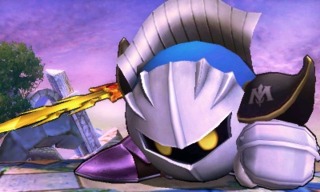
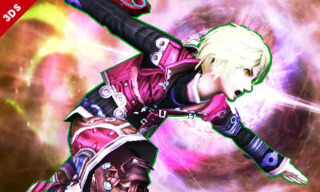
The items that drop in the middle of battles are weirder than ever and have a wider variety of effects. There are a few that can deliver one-hit-KOs, and one that will give you an extra life, and they help boost the tension and excitement of an anarchic free-for-all bout. If you play competitively, you may note that Nintendo has made tweaks to almost every area, from grabs to ledge guarding. Even classic Smash Bros. concepts like directional influence have been overhauled. Now, instead of having some control over the exact angle your character will fly when hit, you have the ability to modify the strength of the effect through a mechanic that players have called "vectoring." Characters can now be customized to increase their speed, defense, or attack at the cost of another stat. You can import Miis, give them one of three fighting styles, and micromanage some of their attacks. The main cast of characters has ballooned to 49, which is a huge increase from the 12 found in the original Nintendo 64 release. Almost all of the characters play differently. For the purposes of this review, I spent at least 10 minutes playing with each fighter (over eight hours of simply sampling the roster) so that I could figure out which ones I liked and which I thought didn't match my play style.
The characters I found myself gravitating towards were those that felt quick and light and could chain lots of attacks together. Pac-Man, for example, is incredible at this. While running, he can use an attack that hits three separate times while he continues to move forward. That can lead straight into one of his special moves, which lets you trace a short line and rocket towards an enemy. Greninja felt just as smooth, focusing as he does on light attacks and quick movement. All of the characters are extremely tight and responsive, and made me feel like I had total control over the field. Even older characters notorious for their sluggishness have been given a boost. Bowser is much, much faster for example, even though he’s still a heavier character. It’s impossible to say this early on whether all of these fighters will turn out to be as balanced as they seem to be, but for now at least, they feel closer than they’ve ever felt to being on equal footing.
Stages are similarly varied and have a wide range of hazards and tricks to keep players engaged and constantly moving. Having them on a handheld system with limited graphical power has led to smaller stages overall. Smash Bros. 3DS aptly balances that with characters that are generally tougher to kill and small arenas packed with inventive ideas. One of my favorites, Gerudo Valley, pulls its inspiration from The Legend of Zelda: Ocarina of Time. A wooden bridge runs through the center of the map, and if you're not careful, a stray attack could break it, causing you to fall into a chasm below. If you do fall, you can still fight your way back up, but other players will have the advantage of higher ground. From time to time, a pair of witches will show up and blast the canyon with spells, coating the sides in either vicious flames or pillars of ice. Smash Bros. stages have always been incredibly diverse, and it's great to see that the imaginative levels haven't been lost in the transition from living room console to handheld.
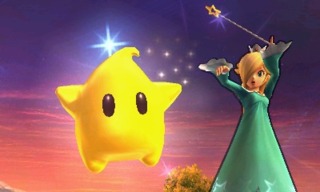
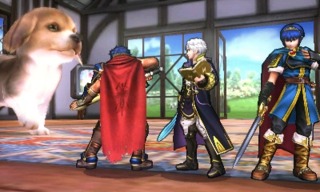
Playing the game on the 3DS, however, did cause some problems for my hands and wrists. There's a distinctly different design philosophy for console controllers which are engineered to be extremely comfortable to use for hours on end, and portable game systems which need to be small enough to fit into a pocket. As an adult male, my hands aren't terribly small, but the 3DS I used for the first few days of this review was. Besides taking some time to get used to the relatively cramped buttons, I also noticed a shooting pain and intermittent numbness in my wrist. I switched and started to play to a larger 3DS XL, and felt quite a bit better. I've played quite a few games in my time, and spent countless hours with Pokémon, Zelda, and more on the 3DS, and never had these kinds of issues. While everyone's hands are different, I feel that given the severity of my symptoms, it's worth mentioning that if you're going to be picking this game up, you might want to try the demo a bit if you're using one of the smaller 3DS models. Beyond physical complaints, I had no technical problems whatsoever, even when playing with people in Japan and Europe to test out the online features (even though there have been some early reports of lag in multiplayer matches).
Smash Bros. 3DS has two online modes to choose from: For Fun and For Glory. The former has the full standard list of stages available, and signature Smash Bros. items like the Beam Sword and Home Run Bat will appear regularly. In the latter, every stage is a variant of the Final Destination location, meaning it's completely flat and has no special characteristics. Items are banned from these matches in an effort to more closely mimic the kind of competitive environment that has grown up around the series. Nintendo's clearly trying to appease as many fans as possible, and that's not a bad thing. You can also play with friends only, and that opens up a few more options; namely, using your custom Mii Fighters, which aren't allowed in bouts with strangers.
Unless you’re playing with your friends, you won’t be able to play anything but two-minute timed matches, but even those are great. They are short enough that the pain is over quickly if you’re getting knocked around by someone much better than you, and because you don't have long to get invested in the results, each match leaves a sweet aftertaste. Because I played before the US release, the majority of my games were with folks in Japan, and I had a great time. Everything felt fair, and I was always matched with people who were close enough to my skill level that I was consistently challenged.
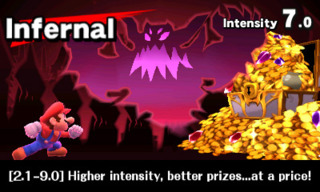
Single-player modes are pretty minimal on the 3DS, especially compared to Super Smash Bros. Brawl, but what's here is fantastic, and serves as both a great challenge to veteran players and a friendly romp for the less experienced. The Classic mode has existed in one form or another since the first Smash Bros., and while the 3DS version of it might seem a little bit shorter than before, it's also by-far the best. Before each run, you'll wager gold coins that you've earned by playing matches. The more you wager, the tougher the fights, but that also ups the rewards and collectibles you can earn. You'll have five main fights to finish, followed by the perennial boss, the Master Hand. You can select different sub-routes along the way, with each of them being color-coordinated for difficulty and offering that same core trade-off between reward and challenge. At the end you'll collect your winnings, possibly unlock a new character, or play through again. Which is what I did. A lot.
Betting in-game gold on myself pushed me to try harder and harder. And that actually means something for once, as previous Smash Bros. titles had comparatively easy single-player modes. Higher difficulty levels will also have different, multi-part end bosses that you’ll have to fight while saddled with a harsh time limit and limited lives. Losing causes the difficulty to drop down a notch, and you’ll lose a good chunk of cash. Seeing the piles fall away adds insult to injury, but also works as an excellent motivator.
Single-player modes are pretty minimal on the 3DS, especially compared to Super Smash Bros. Brawl, but what's here is fantastic.
You can spend the gold you pick up in an in-game store to unlock new trophies, or you can play other modes like Trophy Rush, which costs a certain amount of gold per second of play. In all of these modes the goal is to unlock more of Smash Bros.' many, many, many secrets. Hidden stages, characters, items to upgrade your Miis, and trophies all pull from the Nintendo pantheon, and are all meant to be something special to some fan somewhere. When you cut right down to it, that's really what the whole series is for--fan service that allows you to find and unlock more fan service so that you can play with other fans and share in the fan experience.
I found so much raw joy in my time with Super Smash Bros. 3DS. And even though I played to the point where I was literally in pain, I didn't have to keep playing Smash Bros. 3DS. I wanted to.